Welcome to On Verticality. This blog explores the innate human need to escape the surface of the earth, and our struggles to do so throughout history. If you’re new here, a good place to start is the Theory of Verticality section or the Introduction to Verticality. If you want to receive updates on what’s new with the blog, you can use the Subscribe page to sign up. Thanks for visiting!
Click to filter posts by the three main subjects for the blog : Architecture, Flight and Mountains.

A Design for Converting The Crystal Palace Into A Tower 1000 Feet High
Most people familiar with the history of modern architecture know the Crystal Palace. It was built in Hyde Park, London for the Great Exhibition of 1851, and it was designed by Joseph Paxton. What most people don’t know, however, is another architect took the pieces of the Crystal Palace and re-arranged them into a supertall tower proposal. It wasn’t built, of course, but it’s a fascinating proposal that takes advantage of the temporary nature of the original building.
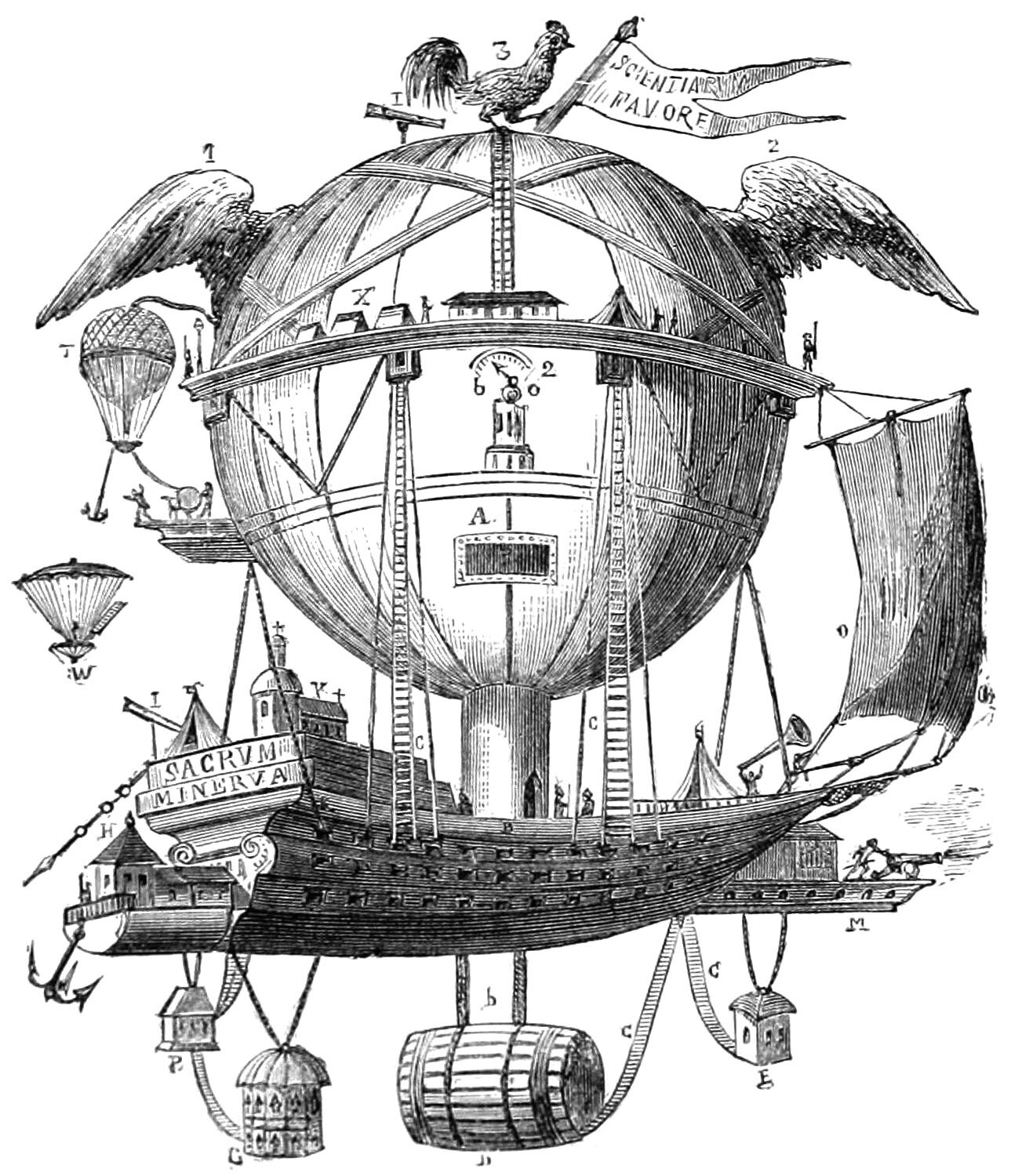
Étienne Gaspard Robert’s La Minerve Airship
Pictured above is an airship design from 1803 by Étienne Gaspard Robert. Robert was a Belgian stage magician and physicist, and he also designed and flew balloons. His most famous design, called La Minerve, is pictured above. It was meant to be an exploratory vessel which would make multi-month trips around the world. Robert described the craft as an aerial vessel destined for discoveries, and proposed to all the Academies of Europe. It’s impractical, naïve, and amazing.
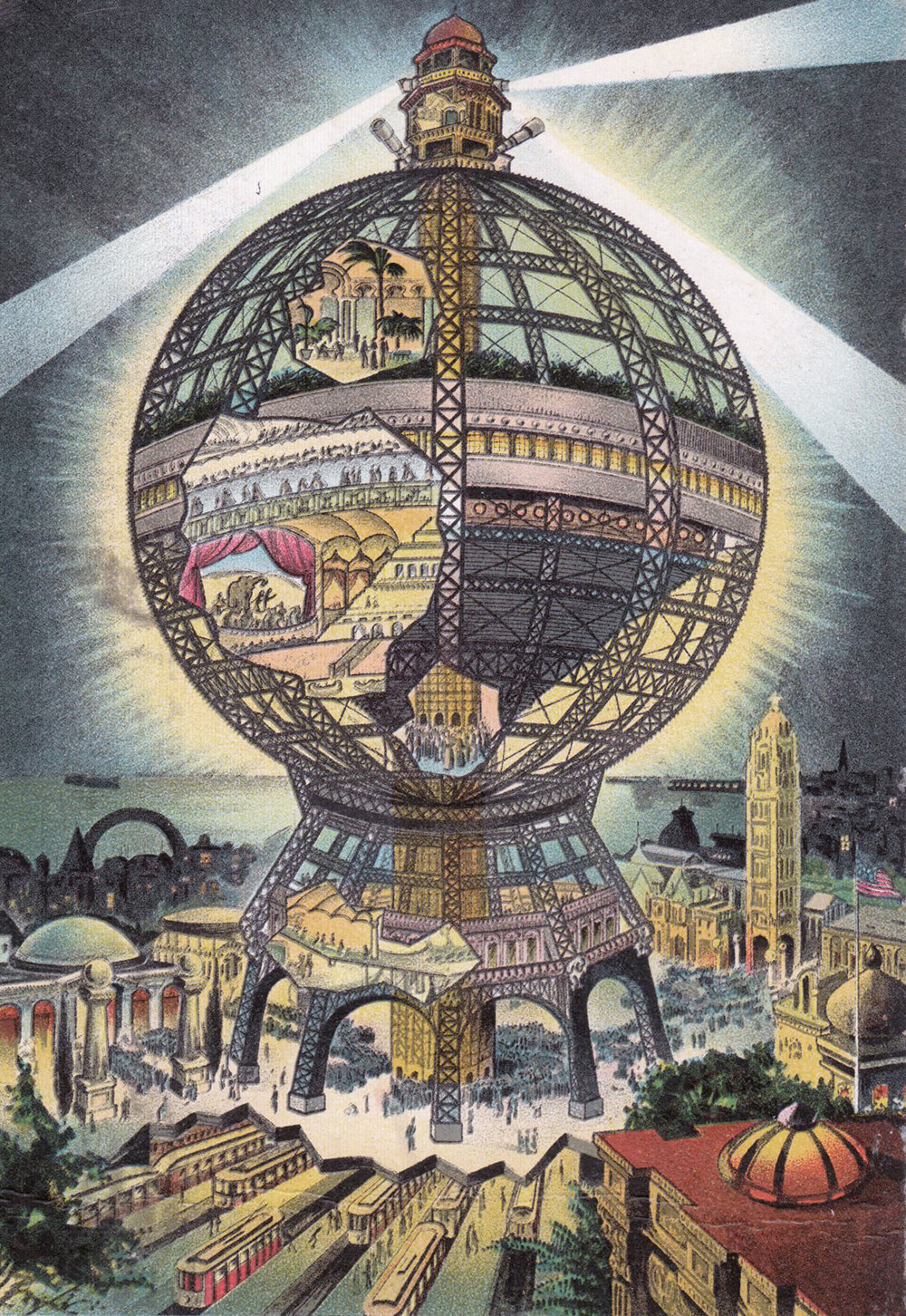
The Coney Island Globe Tower
Pictured above is the Coney Island Globe Tower, proposed in 1906 by Samuel Friede for a lot at the corner of Steeplechase Park in Coney Island, Brooklyn. The building features an enormous globe built of latticed steel, similar in style to the Eiffel Tower. The Globe was designed as an entertainment and leisure complex, and it was marketed as the second tallest building in the world, behind the aforementioned Eiffel Tower. The most intriguing part of the proposal, however, is that it was a fraud.

Anecdotes : Mountain Climbing and Verticality
I took the above photo on a recent hike up Mount Washington in the White Mountains of New Hampshire. I was at the Lake of the Clouds, which is a small pond near the summit. The ascent up the mountain brought me face-to-face with some of the most breath-taking and unforgiving landscapes I’ve ever experienced. It was an intensely personal experience, and I still find myself struggling for the words to describe my feelings throughout the climb. It also helped me to understand a few aspects of the human need for verticality, and I’ll explore them in the following paragraphs.
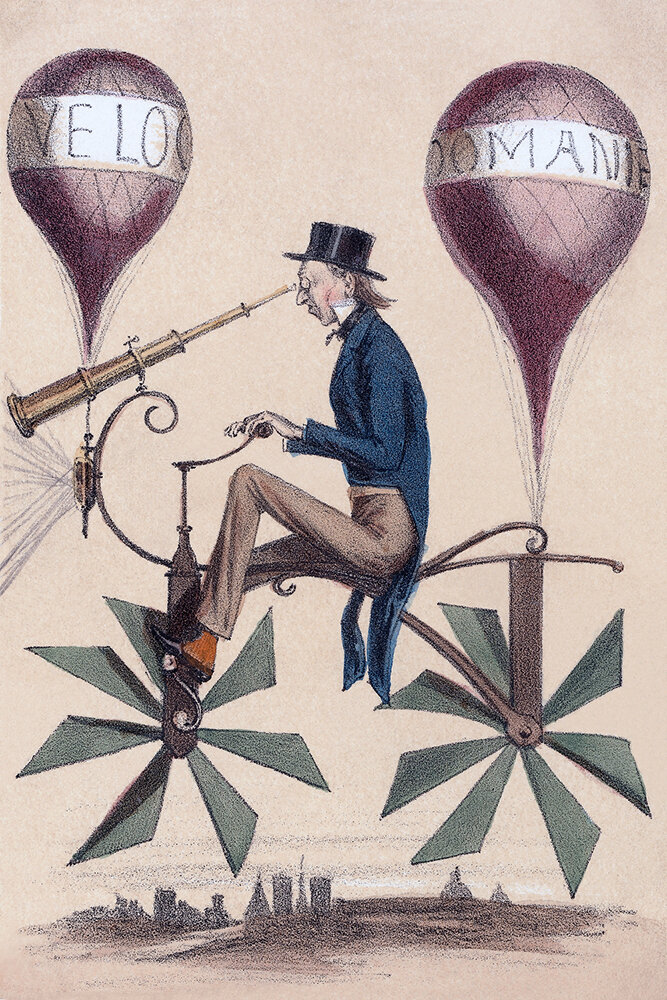
A Voyage to the Moon
There’s a fine line between fiction and invention. Throughout my research into flying machines, I’ve come across many fictional designs that weren’t meant to actually fly, but to evoke the idea of flight. The above cartoon is one of these. It’s a French cartoon from 1867, titled Voyage a la Lune, or Voyage to the Moon. It riffs on the idea of a bicycle that flies, and it’s got a playful feeling about it, as if it doesn’t take itself seriously.
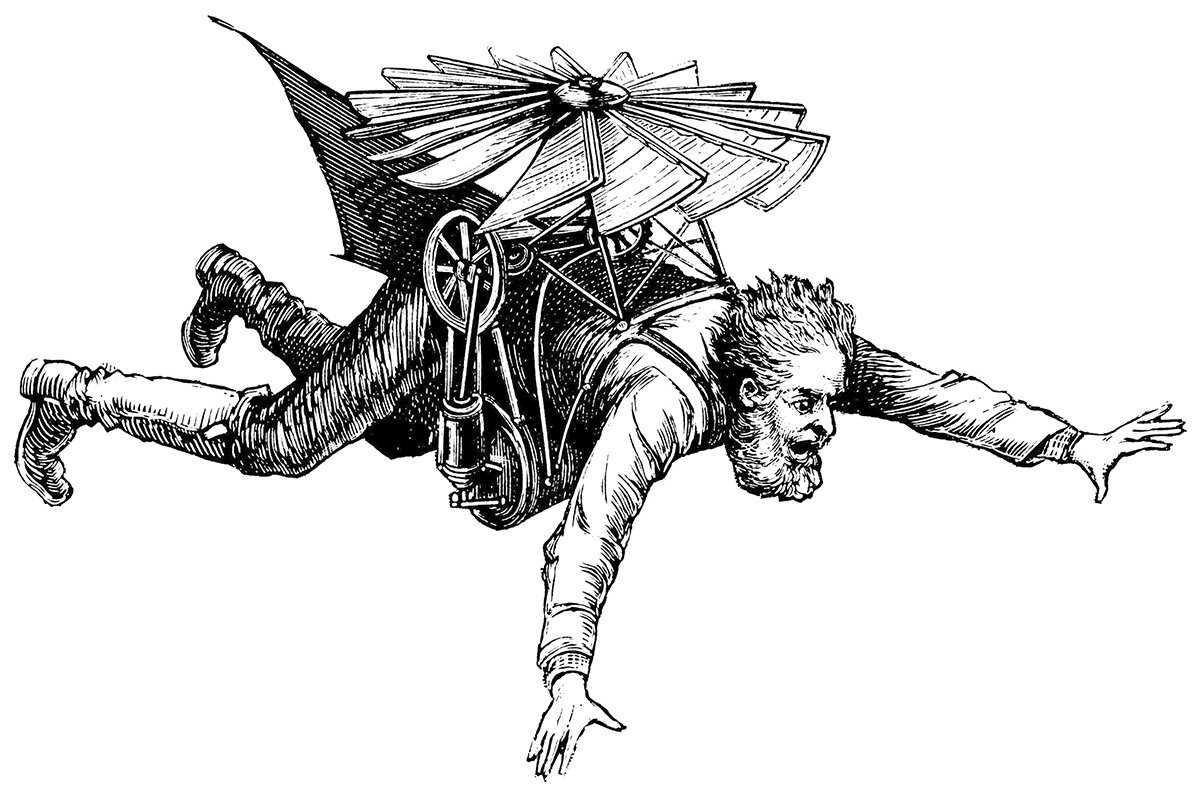
Those Wacky Victorian Flying Machines
Throughout my research into the history of flight and flying machines, I’ve come across a few examples that I cannot find any description or context for. I’m calling them Victorian because they’re illustrated in a similar style to that time period, but I’ve been unable to date them with any certainty. If anyone has any information about these contraptions or their creators, please let me know!
“This is the human paradox of altitude: that it both exalts the individual mind and erases it. Those who travel to mountain tops are half in love with themselves, and half in love with oblivion.”
-Robert Macfarlane, British author, born 1976

A Suggestion for a Flying Machine
The above illustration appeared in an 1877 issue of The Graphic, with the simple headline “A Suggestion for a Flying Machine”. Without any context or description, we can only take the image at face value. The machine seems to be lifted by a group of balloons placed centrally between two large wings, and the pilot dangles from a pole at the center of it all. Said pole has a tail behind it, and the pilot’s arms and legs control the tail and the wings, respectively.
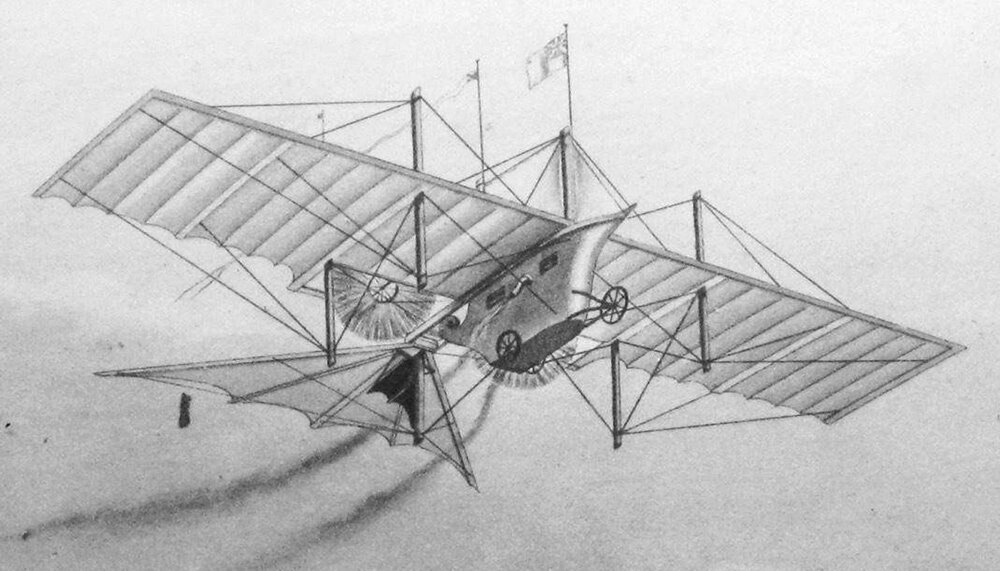
Henson & Stringfellow’s Aerial Steam Carriage
This is the Aerial Steam Carriage, patented in 1842 by William Samuel Henson and John Stringfellow. It’s a monoplane that marked a transition from gliders to self-powered machines in the human quest for flight. It’s hard to tell from the picture, but the design is quite large, with a 45 meter (150 foot) wingspan, and it weighed around 1,400 kg (3,000 pounds). Henson and Stringfellow designed the Carriage to transport 10-12 passengers, but it would’ve been too heavy to fly with the steam engine they specified.

Leonardo da Vinci’s Saint John the Baptist
This is Leonardo da Vinci’s painting Saint John the Baptist, painted near the end of da Vinci’s life and career, sometime around 1515. It shows the saint, dimly lit against a dark background and gesturing with his right hand up to the sky. His upward gesture is the focus of the work, since his arm is the closest to the frame, and also the brightest part.
‘We lack the wings to fly, but will always have the strength to fall.’
-Paul Claudel, French poet, 1868-1955
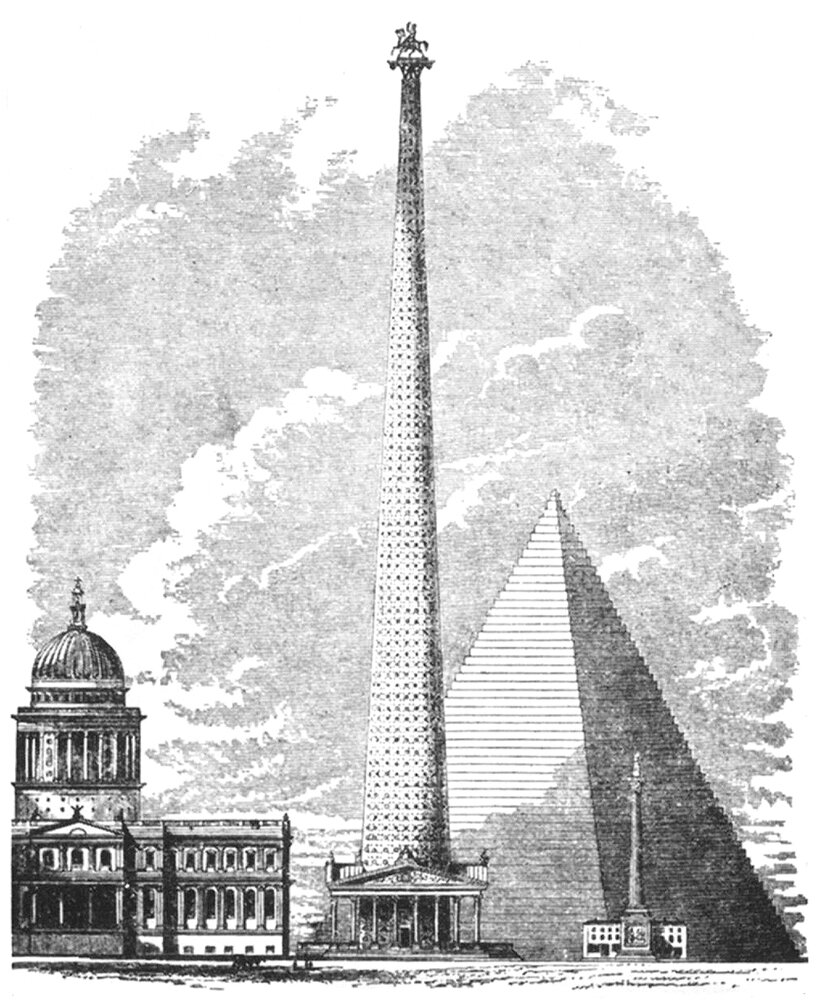
Richard Trevithick’s Monument to the Reform Act
This is Richard Trevithick’s Monument to the Reform Act, proposed in 1832 for a site somewhere in London. It was meant to be 1,000 feet (304 meters) tall, and it would’ve towered over the entire cityscape at the time. It’s one of a few tower proposals that aimed for the landmark 1,000-foot height, long before the Eiffel Tower made it a reality in 1889.
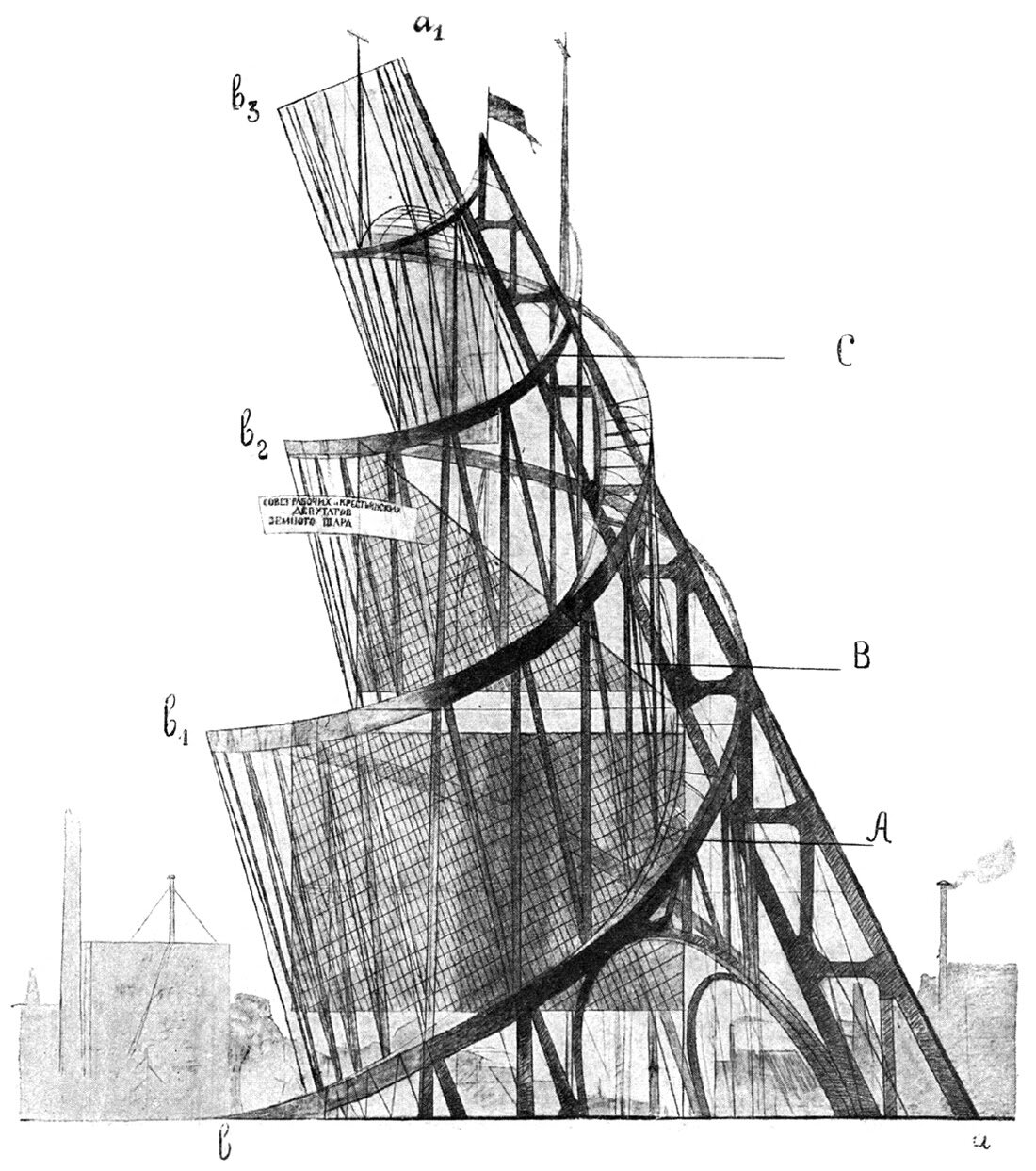
Vladimir Tatlin’s Tower
Tatlin’s Tower has always made me uneasy. There’s something about it’s form that rubs me the wrong way, but at the same time, it’s strangely captivating. In school, I was exposed to it many times in architecture history classes, but it was always glossed over as just another example of Russian Constructivism. Let’s take a closer look and see just how strange it is.
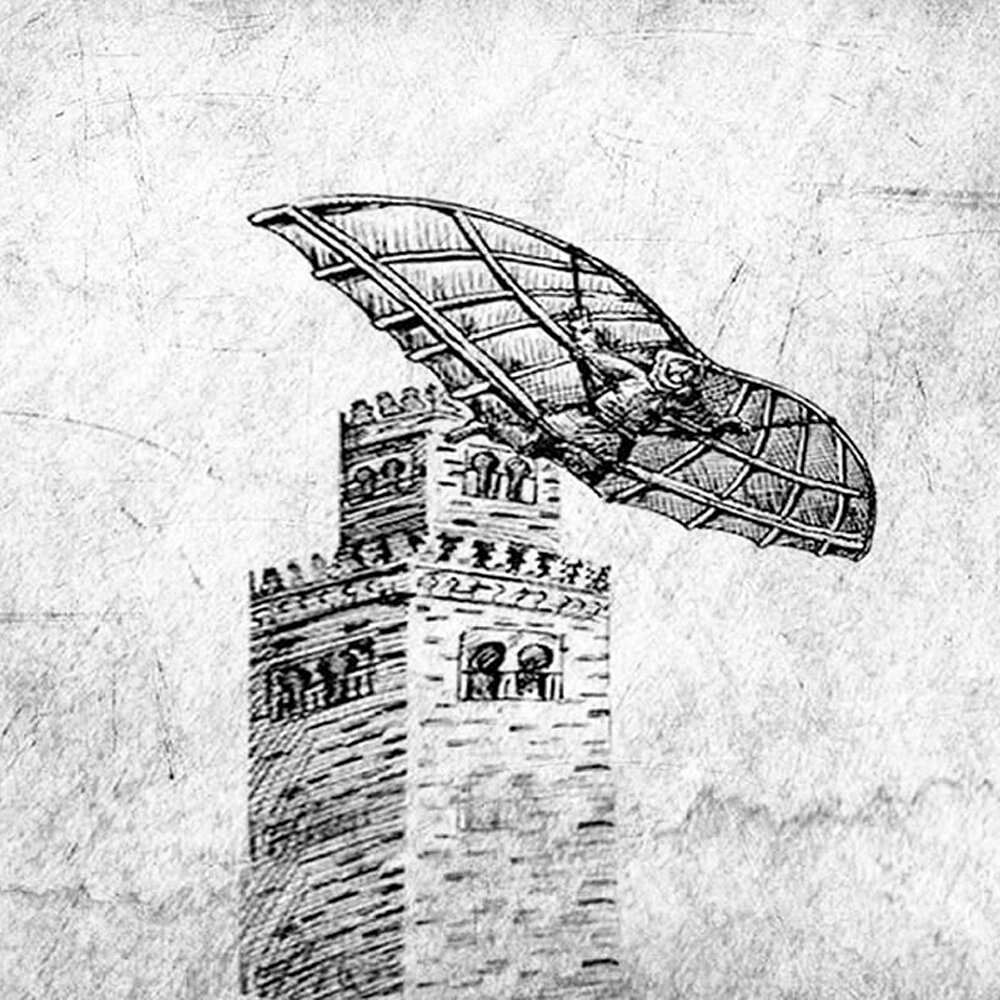
Abbas ibn Firnas’ Attempt At Flight
Abbas ibn Firnas, also known as Armen Firman, was an Andalusin polymath best known for an attempt at flight around 875 AD. Details are scarce, but Firnas allegedly built a pair of wings and jumped from a tower somewhere in Córdoba. His wings allowed him to glide for a bit before crash-landing and injuring his back.
“The instinct to climb up to some high place, from which you can look down and survey your world, seems to be a fundamental human instinct.”
-Christopher Alexander, British-American architect, born 1936
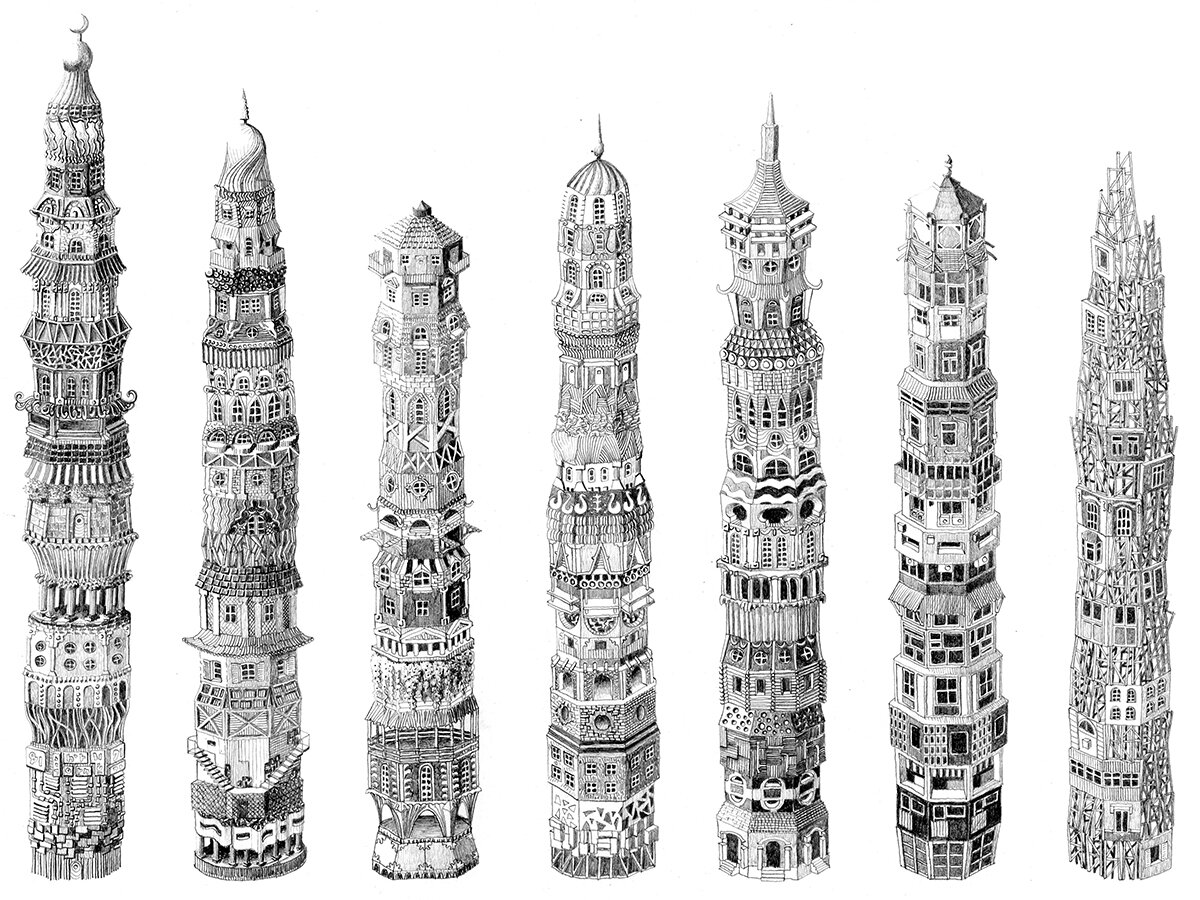
Stacking Typologies
When designing a skyscraper, an architect usually takes a holistic approach. This means the entire building is designed with a common strategy, which usually translates into a single aesthetic. In short, each building has a style. What happens when you start mixing styles together? At the surface, this would sound like blasphemy to most architects practicing today, but let’s ponder it.
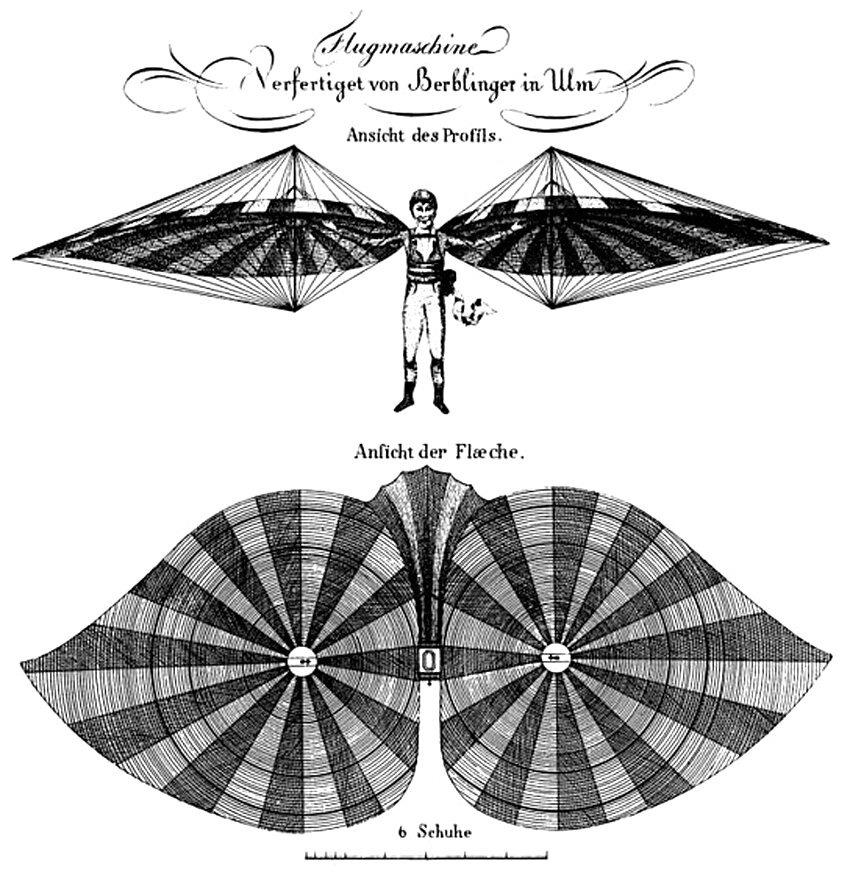
Albrecht Berblinger’s Hang Glider
Albrecht Berblinger was a German tailor from Ulm, who is best known for designing a hang glider in 1811. He was the seventh child of a poor family, and from an early age he was interested in mechanics and watch-making. When he was 13, his father died and he was sent to an orphanage, where he was forced into an apprenticeship as a tailor. He was a tinkerer in his spare time, however, and after becoming a master tailor he became interested in human flight.
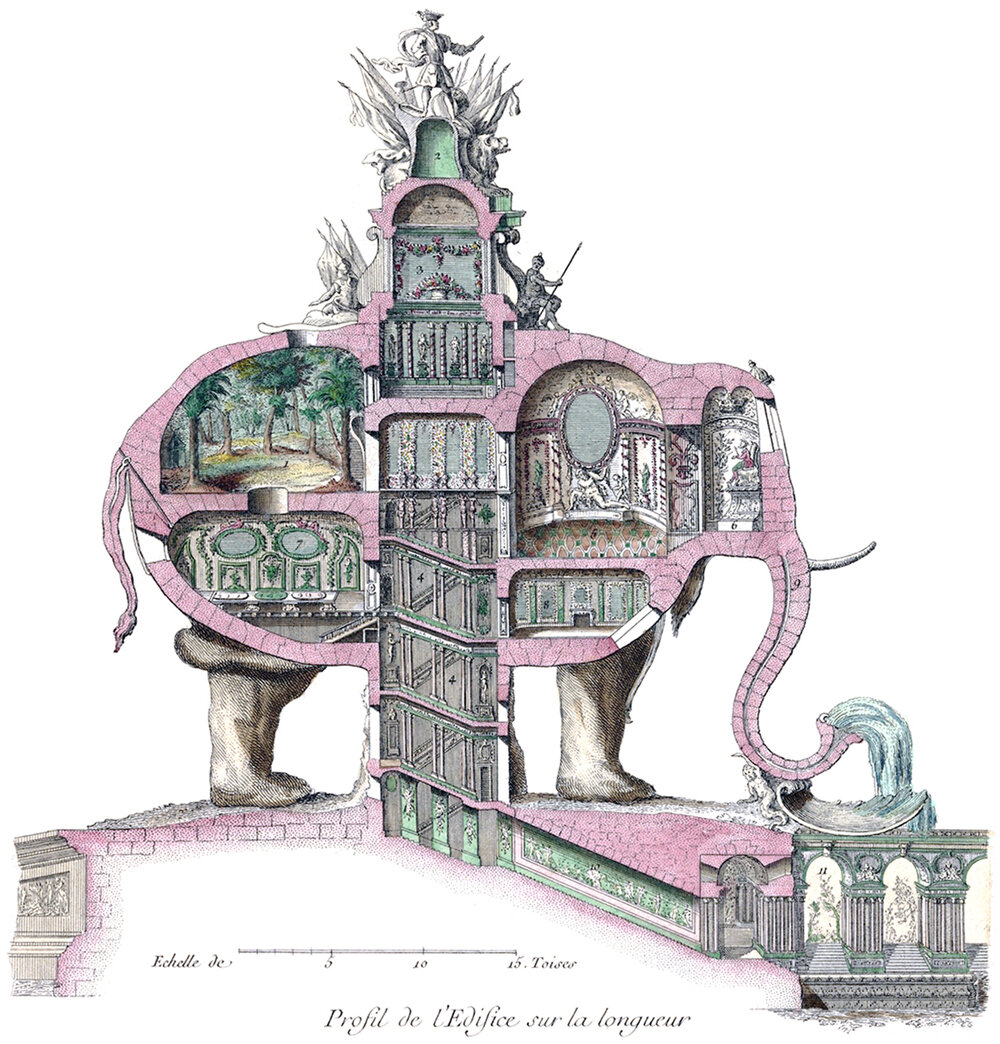
Charles Ribart’s Triumphal Elephant
Certain architectural proposals are hard to take seriously. This is one of them. It’s a design for the site that the Arc de Triomphe would eventually get built on in Paris, and it was proposed a few decades before the iconic monument broke ground. Yes, it’s a giant elephant. Yes, the architect was being serious. Yes, the French government swiftly rejected the proposal.
“Can you give me an explanation as to why the pharmacist has to be two-and-a-half feet up above everybody else? What the hell is he doing, he can't be down there on the floor with you and me?”
-Jerry Seinfeld, American comedian & actor, born 1976
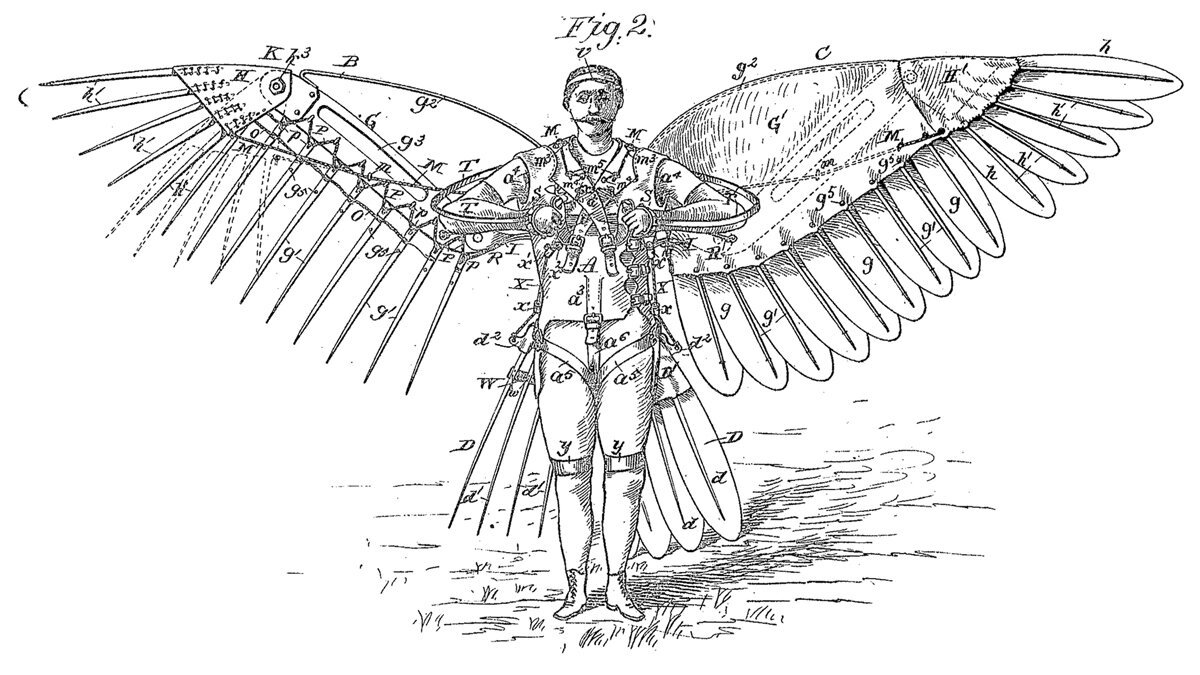
R.J. Spalding’s Birdman Suit
This is Reuben Jasper Spalding’s design for a flying machine, which he successfully patented in 1889. The design is so on-the-nose, I haven’t made up my mind whether it’s amazing or absurd. There’s a chance it’s an honest attempt at human flight, but I see it more as an homage to the earliest flying machines, which took the myth of Daedalus and Icarus and ran with it.
